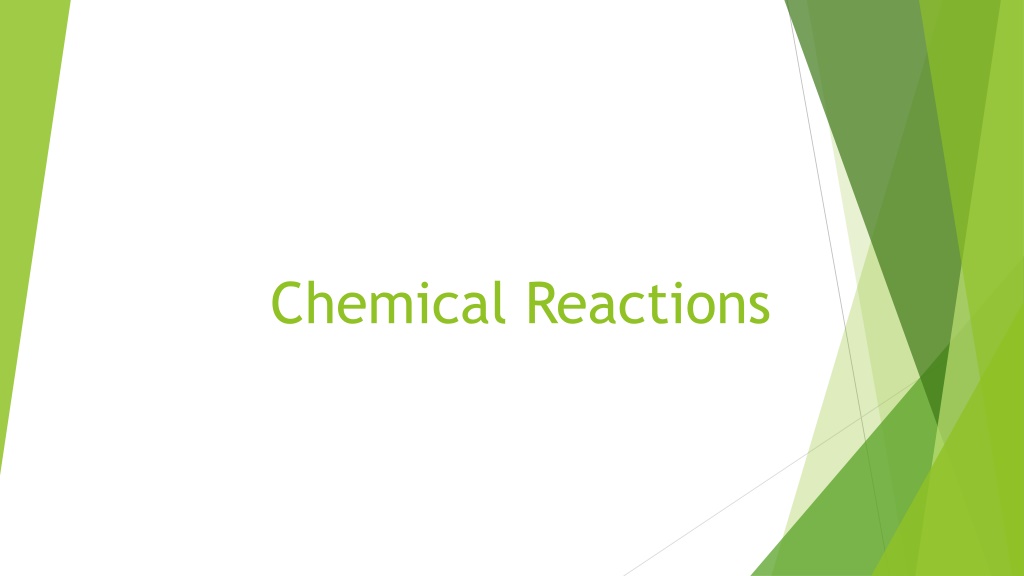
Chemical Reactions and Balancing Equations Explained
Learn about chemical reactions, reactants, products, writing equations, balancing equations following the law of conservation of mass, and writing balanced chemical equations for various reactions like calcium nitrate and sodium hydroxide, copper (II) chloride with aluminum metal. Understand the process step by step with visual aids and examples.
Download Presentation

Please find below an Image/Link to download the presentation.
The content on the website is provided AS IS for your information and personal use only. It may not be sold, licensed, or shared on other websites without obtaining consent from the author. Download presentation by click this link. If you encounter any issues during the download, it is possible that the publisher has removed the file from their server.
E N D
Presentation Transcript
Reactants Before the reaction takes place
Products After the chemical took place
Writing equations Symbols most commonly used
Word equations Solid sodium reacts with a solution of aluminum chloride to produce aqueous sodium chloride and aluminum metal. Fluorine gas is bubbled through a solution of sodium bromide to produce bromine gas and aqueous sodium fluoride. Potassium chloride and water are produced from solutions of potassium hydroxide and hydrochloric acid.
Balancing equations All reactions follow law of conservation of mass. Use coefficients to balance number of atoms on each side of the reaction. Example: 1) ____ Na3PO4+ ____ KOH ____ NaOH + ____ K3PO4 2) ____ MgF2+ ____ Li2CO3 ____ MgCO3+ ____ LiF 3) ____ P4+ ____ O2 ____ P2O3
Write the balanced chemical equation for the following: 1.) Solutions of calcium nitrate and sodium hydroxide react to produce sodium nitrate in solution with solid calcium hydroxide. 2.) Copper (II) chloride is reacted with solid aluminum metal. Copper metal is produced as a solid and aluminum chloride is left in solution.
